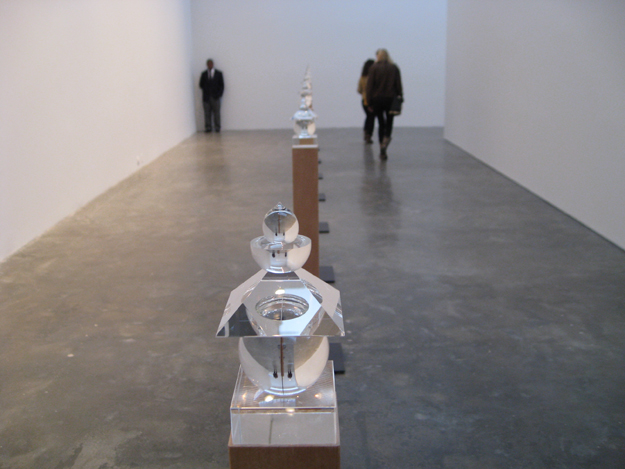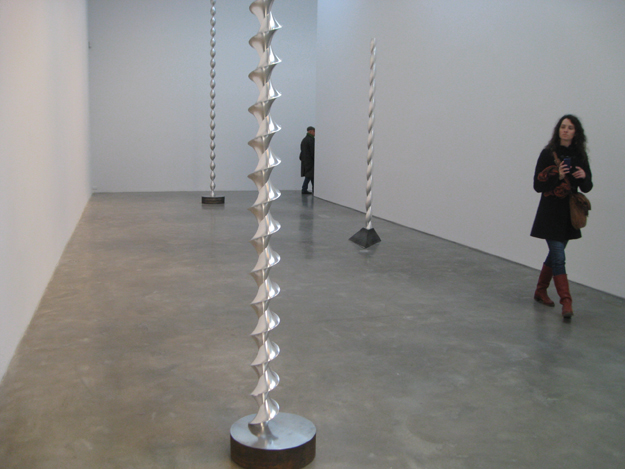NEW YORK—“Surface of the Third Order,” the Hiroshi Sugimoto show at The Pace Gallery is spare, elegant and intriguing. The exhibition of new objects is presented in two parts. There is collection of small crystal pagodas (that look like fancy perfume bottles) inlaid with images from the artist’s Seascape series. The objects appear identical, but when you look closely the featured photographs make the reflections on the surfaces of each distinct. The exhibit also includes a room devoted to three sculptural poles that reference elements of mathematics.
The gallery describes the exhibit as exploring “the concepts of zero and infinity, ideas that have long-informed Sugimoto’s photographic work.” Influenced by Minimalism and Conceptualism, the Tokyo-born artist has lived and worked in New York since the mid-1970s. “Surface of the Third Order” is on view from Oct. 28 to Dec. 23, 2011.
All photos by Arts Observer

From left, “Mathematical Model 009 Surface of revolution with constant negative curvature,” 2006 (aluminum and glass). The tip of the sculpture measures just one millimeter in diameter; One of a series of glass pagodas enshrined with black and white film.

According to the gallery, “each Five-Element Pagoda is based on the form of a thirteenth-century Japanese Buddhist stupa, a traditional reliquary used to hold the ashes of Buddha.”

The pagodas are made with optical-quality glass.

Photographs in the sphere of each pagoda depict water from the Arctic Ocean and Mediterranean Sea.

Foreground, “Mathematical Model 004 Dini’s surface: a surface of constant negative curvature obtained by twisting a pseudosphere,” 2006; Background from left: “Mathematical Model 010 Onduloid: a surface of revolution with constant non-zero mean curvature,” 2007; and “Mathematical Model 005 Generalized helicoid developable surface on an ellipsoid of revolution,” 2006 (all three composed of aluminum and iron).
